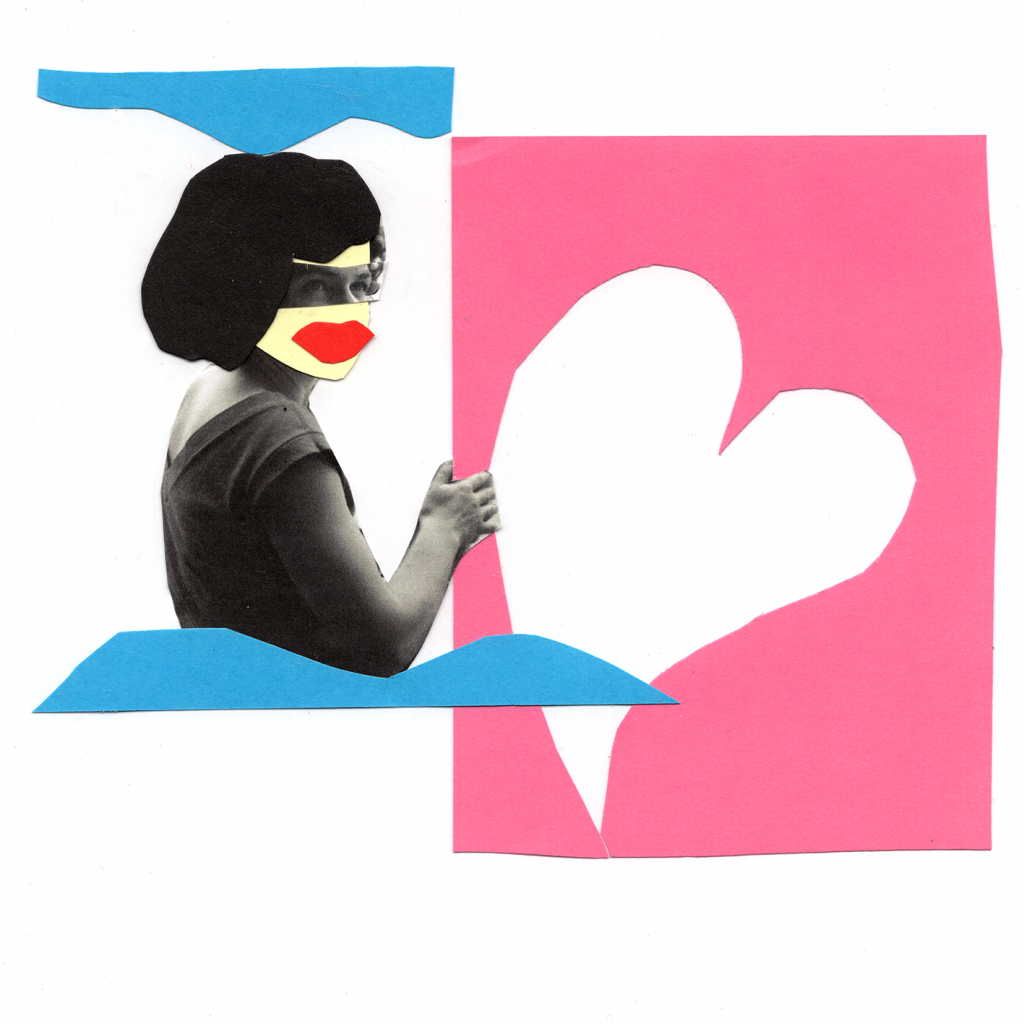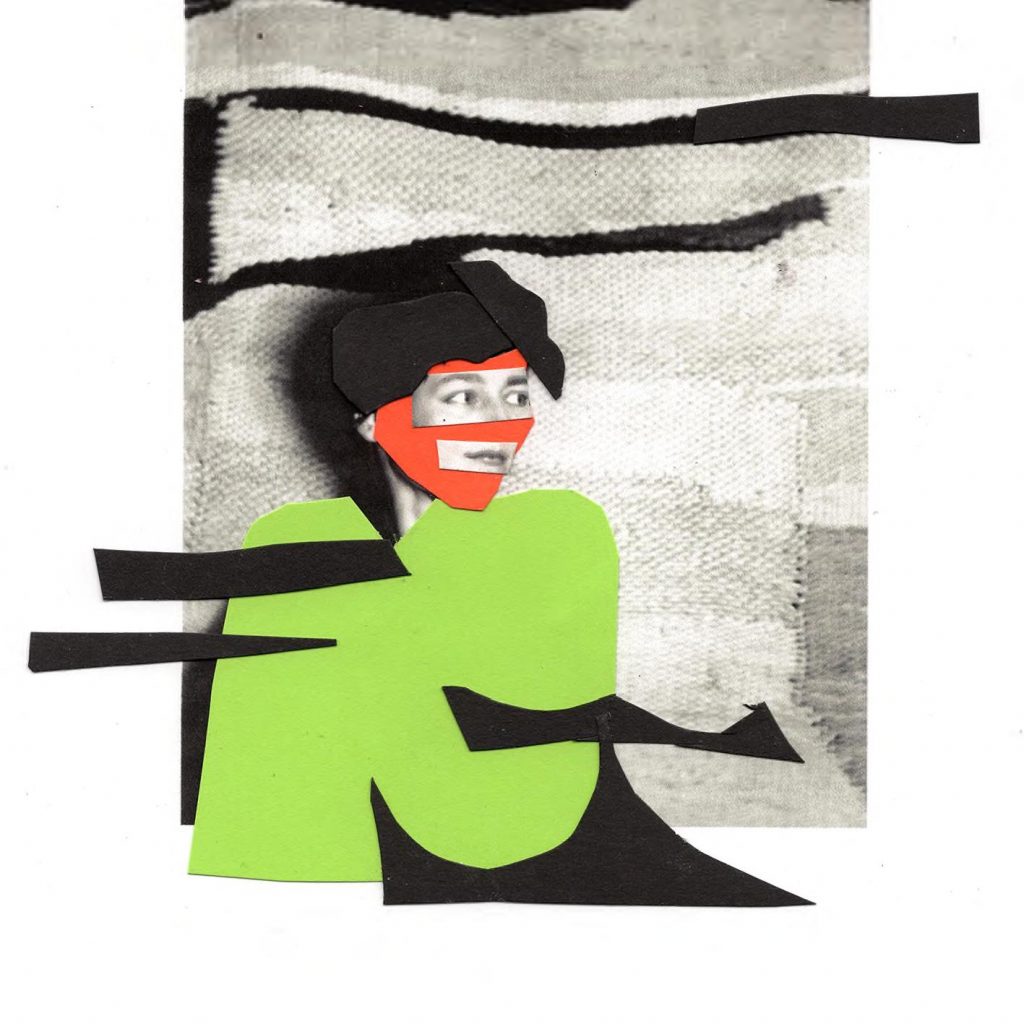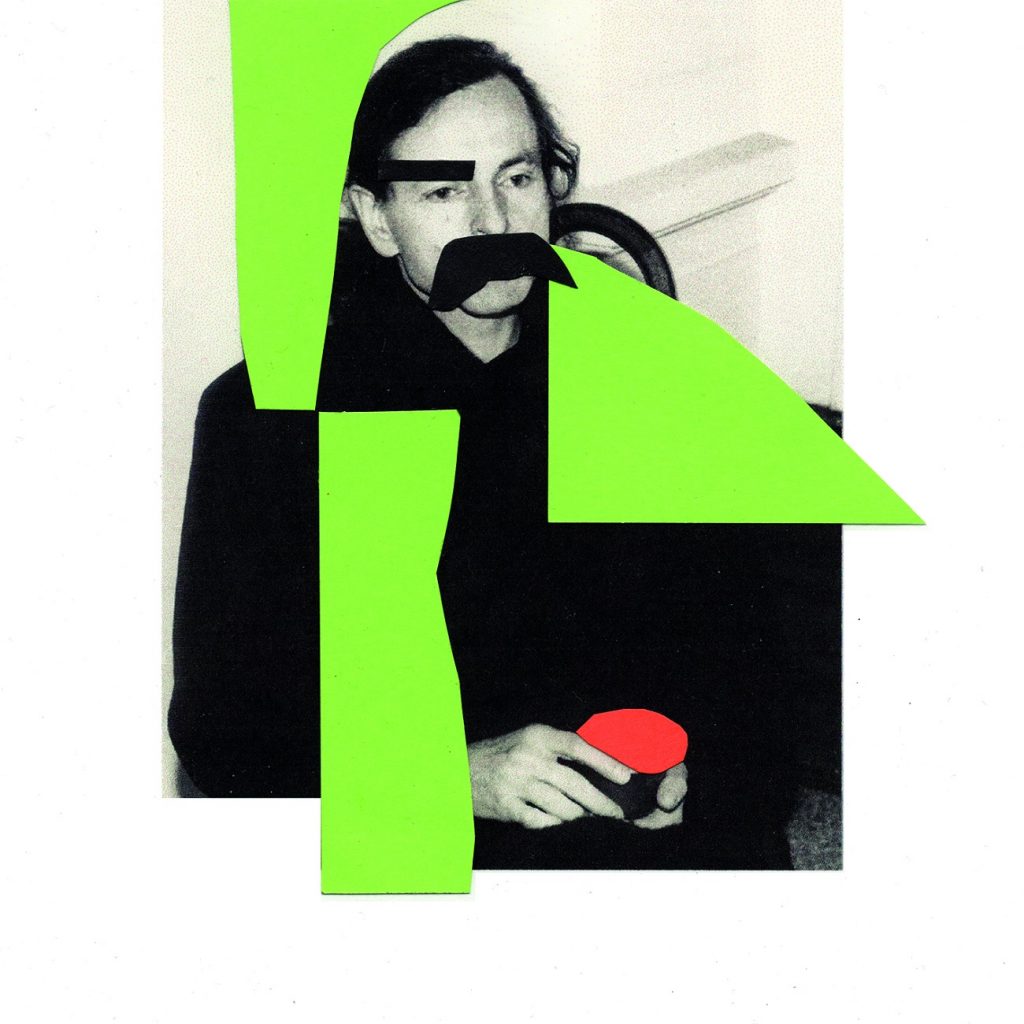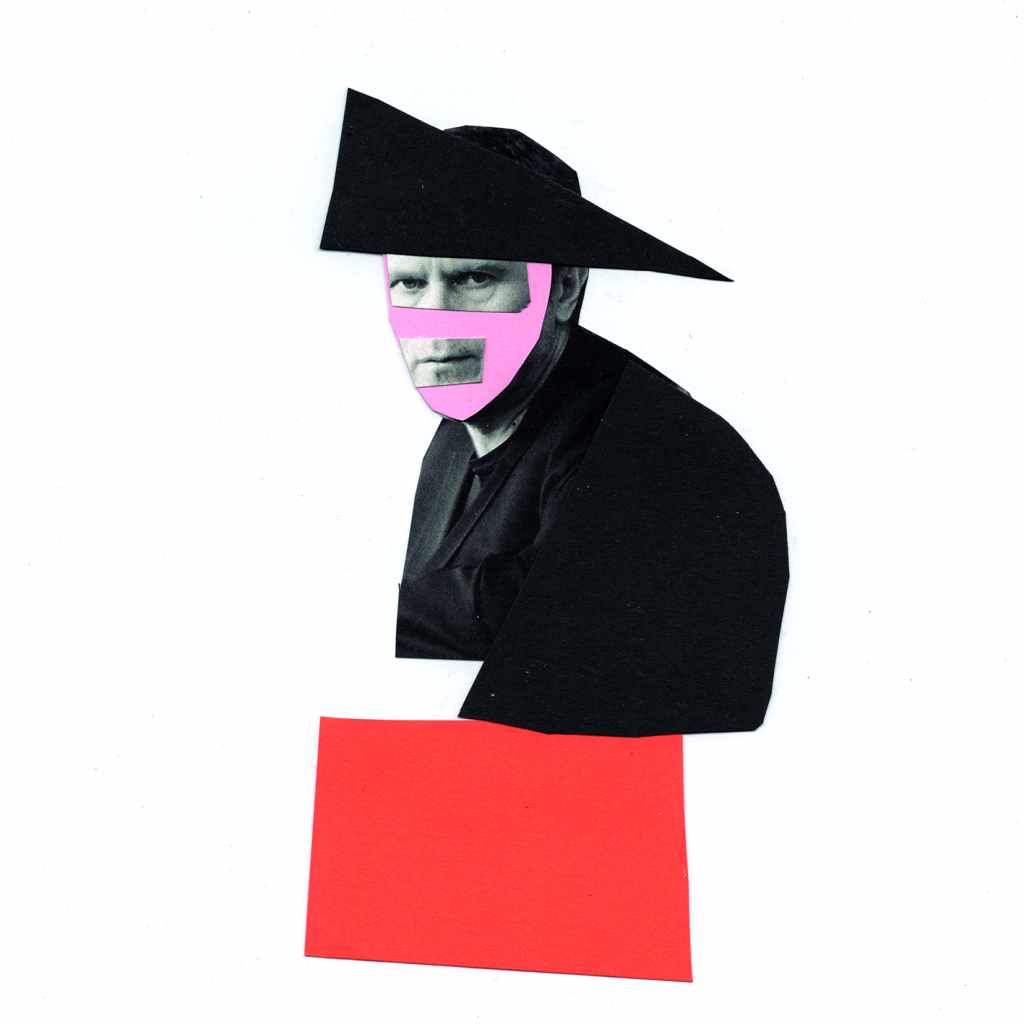
ALINA SZAPOCZNIKOW 1926 – 1973
MULTIPLE PORTRAIT 1967
granite, bronze, coloured polyester, 94 x 51 x 35 cm
„Through the imprints of the human body I try to capture in transparent polystyrene the fleeting moments of life, its paradoxes and its absurdity…“
Four casts of the lower part of a female face layered on a black granite stone insinuating a female bust. The masks bear the features of Alina Szapocznikow. In the early 1960s the artist moved to Paris, where she discovered plastics, vinyl, polyester and polyurethane, then not available in Poland. These light and soft materials were easy to mould and colour. The artist made use of them to capture the transience of the human body. She retreated from traditional sculpture forms and started experimenting. She freed her sculptures from the weight of bronze and stone. In her artistic experiments, Szapocznikow focused on casting parts of her own and her friends’ bodies. She fragmented, transformed, multiplied, and expanded them. The body became both the material and the major theme of her artistic projects.
Alina Szapocznikow was born in Łódź into a family of Jewish doctors. As a teenager she miraculously survived the ghetto and Nazi camps. After the war, she lived in Prague and Paris, where she studied sculpture. As a supporter of communist politics, she did not mind the aesthetics of the social realism although she wasn’t their loyal follower. Beginning with 1963 she lived in Paris with her second husband, graphic artist Roman Cieślewicz. Szapocznikow is remembered as a fascinating woman. She enjoyed her independence and emancipation. Her life and art were the affirmations of femininity and joy of living. Her art often included elements of self-irony and play as she changed her mouth and bust casts into lamps, while her rubber belly moulds into cushions that she would give out to friends. The artist even considered producing her art pieces on a mass scale. In 1968 she was diagnosed with breast cancer. The artist made the disease into yet another theme addressed in her artistic experiments. She died prematurely at the age of 47.
Szapocznikow gained wide international acclaim only decades after her death. Today she is considered as a pioneer of feminist art. With her works the artist broke such then taboo topics as sexuality, decay, disease and death.
Illustrated by JULIA MIRNY

MAGDALENA ABAKANOWICZ 1930 – 2017
THE CROWD 1986 –1994
jute sacks and resin, height 175 cm
„I was asked: Is it the Holocaust? Is it a religious ceremony in Peru? Is it a ritual from Bali? Each time I would answer: yes, it is. Because my art is about a human being in general, about human existence (…).“
Headless naked male figures forming a crowd; all of them in the straight-ahead position; all of them of similar height. In spite of their apparent similarities, there are no two identical figures. Upon a closer look from behind one can notice that they are all hollow.
Abakanowicz started creating the crowds in the mid-1980s and continued until the end of her career. The first sculpture consisted of 50 figures having the height of a grown-up person. With time the body built and numbers of the figures evolved as did their group compositions. Some of the figures were standing backwards, other were captured walking or dancing. There were crowds of children and women, as well as animal-headed groups. Initially, the artist used jute sacks and when her crowds left museum exhibition halls for city streets she reached for bronze, cast iron, and concrete.
The artist was born Marta Abakanowicz at a countryside manor house near Warsaw. Her father’s origins went back to a 13th century Mongolian ruler while her mother came from an old Polish aristocratic family. With the outbreak of World War II, the Abakanowicz family moved to Warsaw. This is when little Marta first encountered the crowds, which would arouse the feeling of anxiety ever since. When the communist government came to power, Abakanowicz made a break with her aristocratic past and changed her first name to Magdalena. Passing as a daughter of a civil servant she was accepted to the Academy of Fine Arts in Warsaw. Following her graduation, she left paining for experimental art involving woven fabrics. It was the artist’s success at the Art Biennale in São Paulo, where her monumental three-dimensional sculptures of soft woven fabrics, called Abakans, won the golden medal, that propelled her to an international career.
Abakanowicz is considered the best known and best-selling Polish sculptor. Her monumental compositions and large-scale sculptures are the artist’s trademarks. She is renowned for her sculptures installed in cityscapes or landscapes. On request of the inhabitants of Hiroshima, she created a sculpture to commemorate the atomic bombing of the city: a group of 40 sitting figures made of bronze.
Illustrated by JULIA MIRNY

KRZYSZTOF WODICZKO 1943
THE HOMELESS VEHICLE 1987
art installation
„I’m a public artist (…) The role of the artist, as I understand it, is to protect the natural habitat of human beings.“
Living in New York in the 1980s presented a real challenge. The affordable housing projects were suspended and residents of the derelict buildings were evicted and forced to live literally on the streets. Krzysztof Wodiczko witnessed these events from artistic and sociological perspectives. This is when he came up with the idea of constructing a vehicle for the homeless, which was designed to be a fully practical object rather than an artistic installation. It took the artist several months to design the vehicle so that it could fulfil the essential needs of the homeless. For this reason, he talked to many homeless people making a list of their requirements. The vehicle was to provide shelter, transport, and protection for objects found on the streets that could potentially be sold. The artist never meant to turn the design into a mass production. His goal was to bring to light the problems of the homeless and to initiate the search for practical solutions.
Krzysztof Wodiczko has a considerable standing on the global scene of new media art. Keeping up to date with the latest technological innovations, he has always put the human being in the center of attention. His art has been influenced by his experiences with applied arts as at the turn of the 1960s and the beginning of the 1970s when the artist worked for the applied arts industry designing for the Unitra manufacturer. In 1968 Wodiczko graduated from the Applied Arts Department at the Academy of Fine Arts in Warsaw.
Wodiczko’s projects are more often to be found in public space rather than in art galleries or museums. In 1977 he emigrated from Poland, first to Canada, and then to the USA where he settled down. In 1994 he was appointed director of the Center for Advanced Visual Studies at the prestigious Massachusetts Institute of Technology. Today Wodiczko heads the Art, Design, and the Public Domain program at Harvard University. He continues to collaborate with Poland as well.
Illustrated by JULIA MIRNY

MIROSŁAW BAŁKA 1958
HOW IT IS 2009
art installation
„I’m not keen on making too literal gestures; narrativity bothers me. I have always preferred to express less than more.“
Overwhelming silence gathering in the complete, deep, and empty darkness. This was the experience undergone by visitors to the prestigious Tate Modern in London in 2009. In the Turbine Hall Mirosław Bałka installed a gigantic steel container with an entrance ramp covered with soft black fabric. The title of the work comes from Samuel Beckett’s novel. Taking the steps through the entrance ramp and plunging into the total darkness evoked numerous associations. The experience brought to mind several motives derived from art, history, or science: the Biblical belly of the whale, the cosmic black hole, Conrad’s heart of darkness, or the freight car transporting Jews to a death camp.
Bałka is a phenomenon on the Polish art scene. His name is internationally recognized on both sides of the Atlantic. Bałka’s art evokes associations with the traumas of World War II and the Holocaust. Born in Warsaw, Bałka has his art studio in nearby Otwock. The artist earned a degree from the Academy of Fine Arts in Warsaw. His diploma work Remembrance of the First Holy Communion made a lasting impression. The artist recreated a self-portrait from his childhood from the perceptive of a grow-up man. Holding a special place in his art, the artist’s hometown and family home have become a recurring motif in his works. As one of the curators has put it, home is another body of the artist. Bałka’s works are often inspired by house measurements and designs.
In 1991 Bałka received a Mies van der Rohe grant from the Art Museum in Krefeld, Germany. Since 2010 the artist has been a member of the Der Künste Academy in Berlin. He has been in charge of the Studio of the Spatial Activities at the Media Art Department of the Academy of Fine Arts in Warsaw for the last ten years. The artist’s work is exhibited both in Poland and abroad. Bałka’s installations are included in collections of such prestigious museums as MOCA in Los Angeles or the Museum of Modern Art in New York.
Illustrated by JULIA MIRNY
